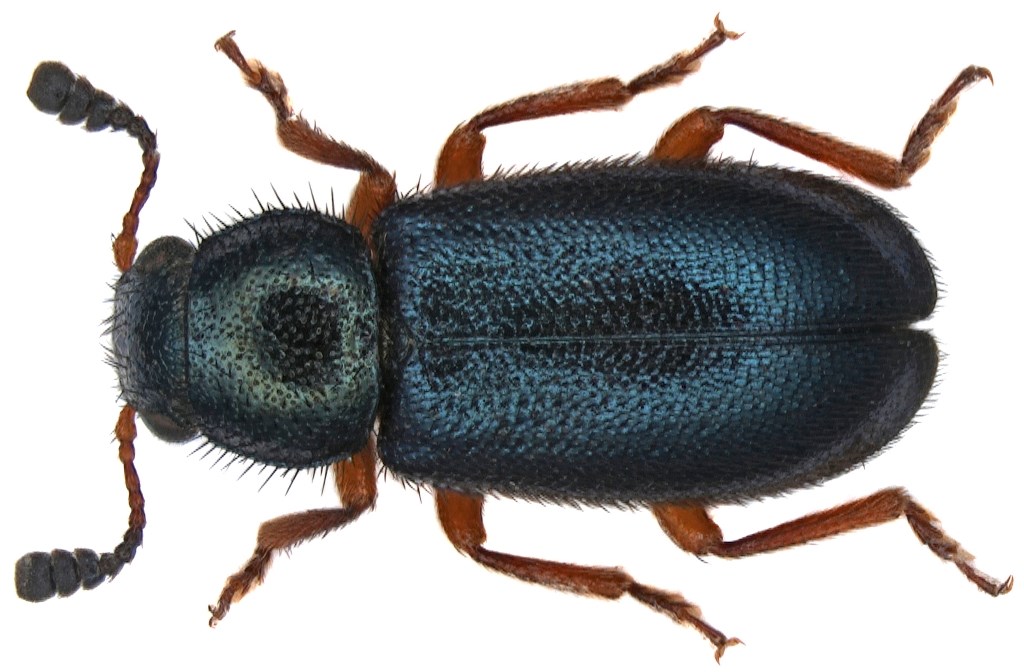Red-legged ham beetle, Copra beetle
(Necrobia rufipes)

Biology:
The red-legged ham beetle is also known as the copra beetle as its diet predominantly consists of copra (dried coconut flesh) and animal products, such as ham, sausages, cheese, hides, furs, fish meal, dried eggs and much more. The shiny, green-blue beetle can fly and is 4 to 7 mm long. Its legs and the bottom of its antennae are red. The thin larvae are initially white, then grey-brown and they grow up to 10 mm long. Adult larvae migrate to a dry, dark place in order to pupate in an oval, paper-like cocoon. The larvae can also hibernate in unheated rooms.
You can often find the larvae near ports as they are usually introduced by ships.
Damage:
Damage is primarily caused by the ravenous larvae, which feed on copra and animal products, and also plant-based materials such as dried fruits and expellers. The beetles themselves eat very little but, like the larvae, they like to hunt the larvae of other insects, such as larder beetle, cheese fly and red flour beetle larvae.
